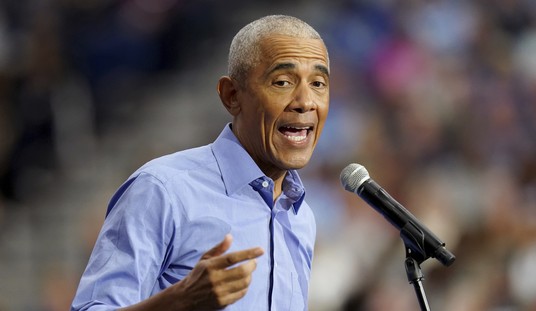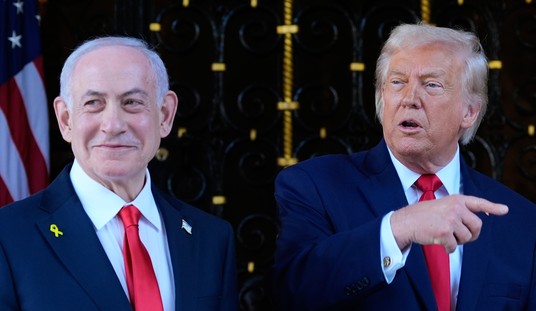A Turn in Taxpayers’ Favor
The USDA finally acted with some common sense: It finally pulled the plug on federal subsidies for solar farms planted on prime farmland. It is simply a line item read in a press release; it was a long-overdue course correction.
Yesterday, U.S. Secretary of Agriculture Brooke L. Rollins alongside Tennessee Governor Bill Lee, Senator Marsha Blackburn, Senator Bill Hagerty, Representative John Rose, and U.S. Department of Agriculture (USDA) Deputy Secretary Stephen Vaden, announced USDA will no longer fund taxpayer dollars for solar panels on productive farmland or allow solar panels manufactured by foreign adversaries to be used in USDA projects. Subsidized solar farms have made it more difficult for farmers to access farmland by making it more expensive and less available. Within the last 30 years, Tennessee alone has lost over 1.2 million acres of farmland and is expected to lose 2 million acres by 2027. This problem is not just in Tennessee, since 2012, solar panels on farmland nationwide have increased by nearly 50%. That is why the Department is taking action.
“Our prime farmland should not be wasted and replaced with green new deal subsidized solar panels. It has been disheartening to see our beautiful farmland displaced by solar projects, especially in rural areas that have strong agricultural heritage. One of the largest barriers of entry for new and young farmers is access to land. Subsidized solar farms have made it more difficult for farmers to access farmland by making it more expensive and less available,” said Secretary Brooke Rollins. “We are no longer allowing businesses to use your taxpayer dollars to fund solar projects on prime American farmland, and we will no longer allow solar panels manufactured by foreign adversaries to be used in our USDA-funded projects.”
I keep thinking of President Ronald Reagan's quote about being from the government and they're here to help. This program is one of those examples that has been growing well out of proportion, feeding on grass-fed beef. For years, Washington paid developers to install glass and metal atop cropland, while farmers who've worked the land looked on, knowing that those acres would probably never see seeds again.
The government chose to select solar panels over soil, and we had to pay for that choice.
After many years, that era is closing; gone will be rural loan guarantees for solar, bonus points for solar projects filed under farm energy programs, and panels sourced from adversary nations.
Finally, our federal government made the shocking decision that farmland should remain farmland.
Farmland Is Not Spare Land
Whether driving through or over it, farmland has a limitless look. To the people who've worked it for generations, every acre matters; so once the panels go up, that soil stops producing food, raising livestock, and sustaining the families who've depended on it.
At first sight, when you look at fertile soil, city folks (me included) would call it dirt. But prime farmland isn't "dirt," for thousands of years, that dirt has been the foundation of culture, food security, and a country's ability to sustain itself.
Solar power isn't one panel, installed willy-nilly. Utility-scale solar spreads like poison ivy on the legs of a person foolish enough to keep scratching (again, me). Panels eat up almost nine acres per megawatt. The footprint grows larger when you include service roads and transmission lines.
Future generations of farmers find themselves squeezed by the pressure on land prices, before they even have a chance to get started.
Wildlife Pays the Price
Thanks to professional marketing, solar energy's public image is clean: Quiet fields, gleaming panels, sunlight becoming power.
Once the PR pitches are over, reality sets in. Literally, birds crash into the reflective surfaces. Migrating flocks are fooled because they see water and try to land on what looks like a lake, but end up breaking themselves from the impact.
In scenes reminiscent of science fiction movies, beams of light from a concentrated area of panels have burned birds mid-flight.
None of this appears in any PR pitch or glossy brochures, and it's not mentioned during speeches praising green energy.
Because of Newton, each action has an equal and opposite reaction, meaning that in the quiet accounting of nature, we discover real costs. The greenies' goal of saving the environment always forgets the critters that live there. Far too often, their efforts wind up killing the critical lives nature put there.
Weather Isn’t a Lobbyist
When selling solar power, developers share their dreams of everlasting days, filled with sunshine, rainbows, and unicorns.
Pfft!
What gets lost in the details are details, such as hailstorms. Massive installations in Tennessee, Texas, and the Plains have been pummeled by ice the size of golf balls. In a matter of minutes, thousands of panels were shredded, resulting in insurance claims into the millions.
When Mother Nature reminds developers about the perils of weather, I imagine farmers who've lived on the land for their entire lives, shaking their heads and muttering, "Duh!"
In case the solar developers hadn't noticed, the roofs of every barn and home in the area have taken major impacts. People wisely didn't use glass to cover their roofs.
A farmer bears the loss of a barn collapse, while taxpayers who underwrote the loans to pay for solar farms take it on the chin.
That has never been a fair deal.
The Recycling Problem
When ice-sized golf balls destroy solar farms, or even when panels reach the end of their expected lifespan, we find yet another issue: no recycling system exists.
Recycling solar panels isn't cheap; it costs more than the materials inside are worth, and they end up in landfills.
All the cool kids have wonderful vernacular, such as "circular economies." Unfortunately, in this case, the technology has outpaced cleanup. Get ready for a tidal wave of expired panels without any sensible place to take them. Essentially, solar developers are doing what our government has been doing for generations: Kicking the can down the road. The solar program isn't sustainable; it's tomorrow's waste problem sitting atop today's subsidy bill.
Efficiency Can’t Be Legislated
When defending solar energy, the defenders point to falling costs and developing new technology. What they can't change is efficiency; utility-scale solar power runs at a fraction of the output of natural gas or nuclear power.
Solar panels, on average, sit idle for 75% of the day. Storing their power helps, but it also takes up more land, requires more mining, and costs more money.
Despite the greatest PR money can buy, solar developers run into a problem: Subsidies can't legislate away simple physics.
Politics Wrote the Check, Politics Tore It Up
What was supposed to be about energy really ended up being about politics, evolved from slogans, lobbyists, and pressure tactics from activists. And it worked for a while; Washington handed money out like it grew from trees, and developers cashed in, while panels were constructed on fields that once grew corn or soybeans.
The pendulum is finally swinging back: Congress has already started unwinding tax credits. Following the same track, the USDA is ending the quiet stream of taxpayer-backed guarantees. Developers will finally stand on their own, and rural America is no longer the staging ground for experiments planned in boardrooms, carried on Washington's dime.
Other Subsidies Still Standing
I hope that it doesn't end with solar; other programs need to be reconsidered.
Ethanol mandates divert corn into gas tanks instead of dinner tables. Containing less power than gasoline, the actual cost of ethanol-additive gasoline has been prohibitive due to several factors, including the energy required to produce it, the cost of transporting it, and the unmeasured cost of taking food off our plates.
The best part? It doesn't matter if we want it or not: as long as the pipeline is fed by new production credits and Washington's blessing, ethanol is the fuel equivalent of a cockroach that won't die.
What applies to one subsidy must apply to all: If the principle is that subsidies are required to deliver real public benefit, which solar lost its case, Ethanol should be next.
Final Thoughts
Since President Donald Trump took office, we've seen things out of Washington that haven't been seen for a generation: the application of common sense. The decision by the USDA to end subsidies for solar farms on prime farmland is a victory for common sense. This decision prioritizes food security, wildlife conservation, and taxpayer interests, rather than sacrificing them for a profit-driven approach. I hope it's the start of Fortune 500 companies recognizing that rural America isn't an endless canvas for companies' experiments.
Crops and cattle have lost out to glass and metal in some equation derived in Washington. At least now, leaders are finally prioritizing farms.
Ending these subsidies is definitely the right call.
Why PJ Media VIP Exists
Big media will spin this move as a setback for clean energy. PJ Media calls it what it is: a long-overdue defense of farmland, wildlife, and taxpayers. If you want commentary that speaks plainly and without spin, join PJ Media VIP today.










Join the conversation as a VIP Member